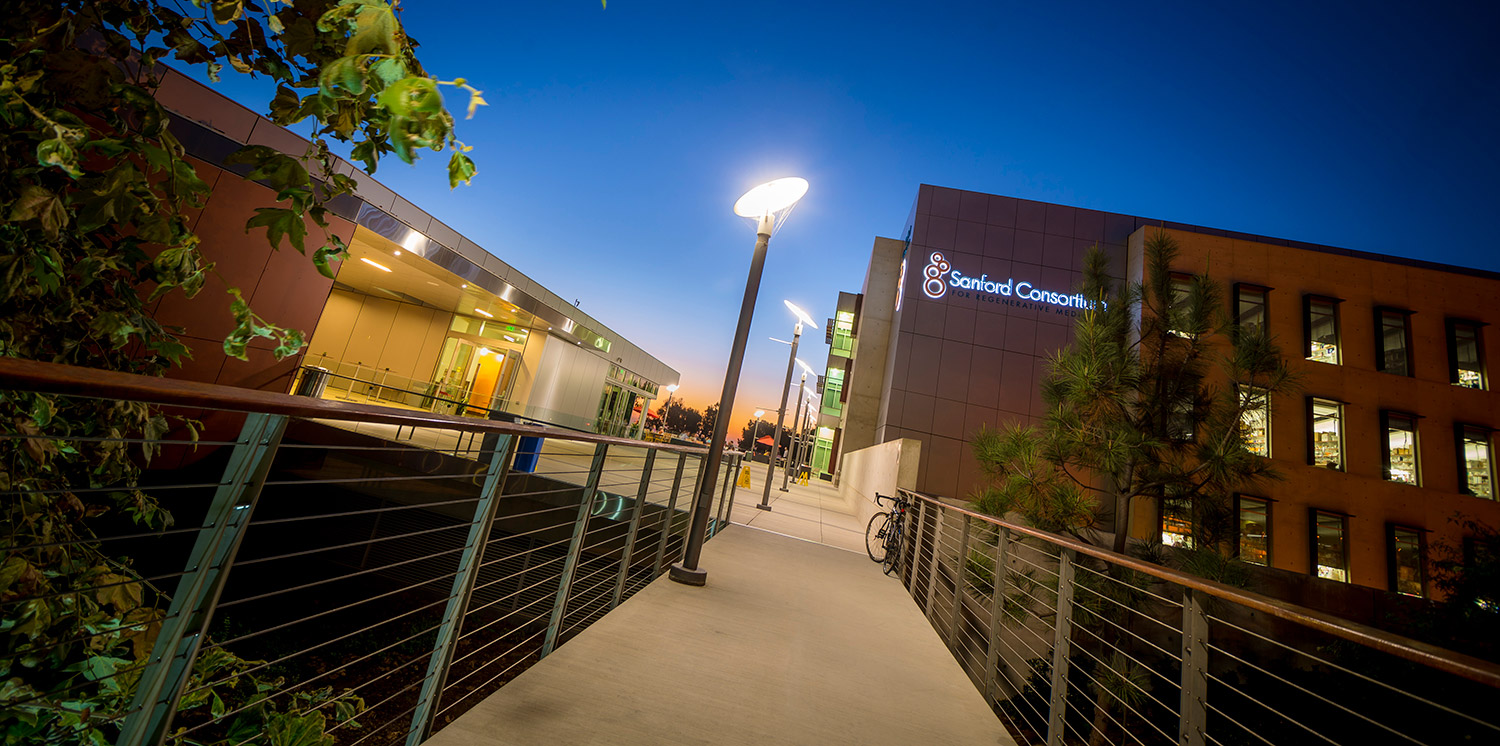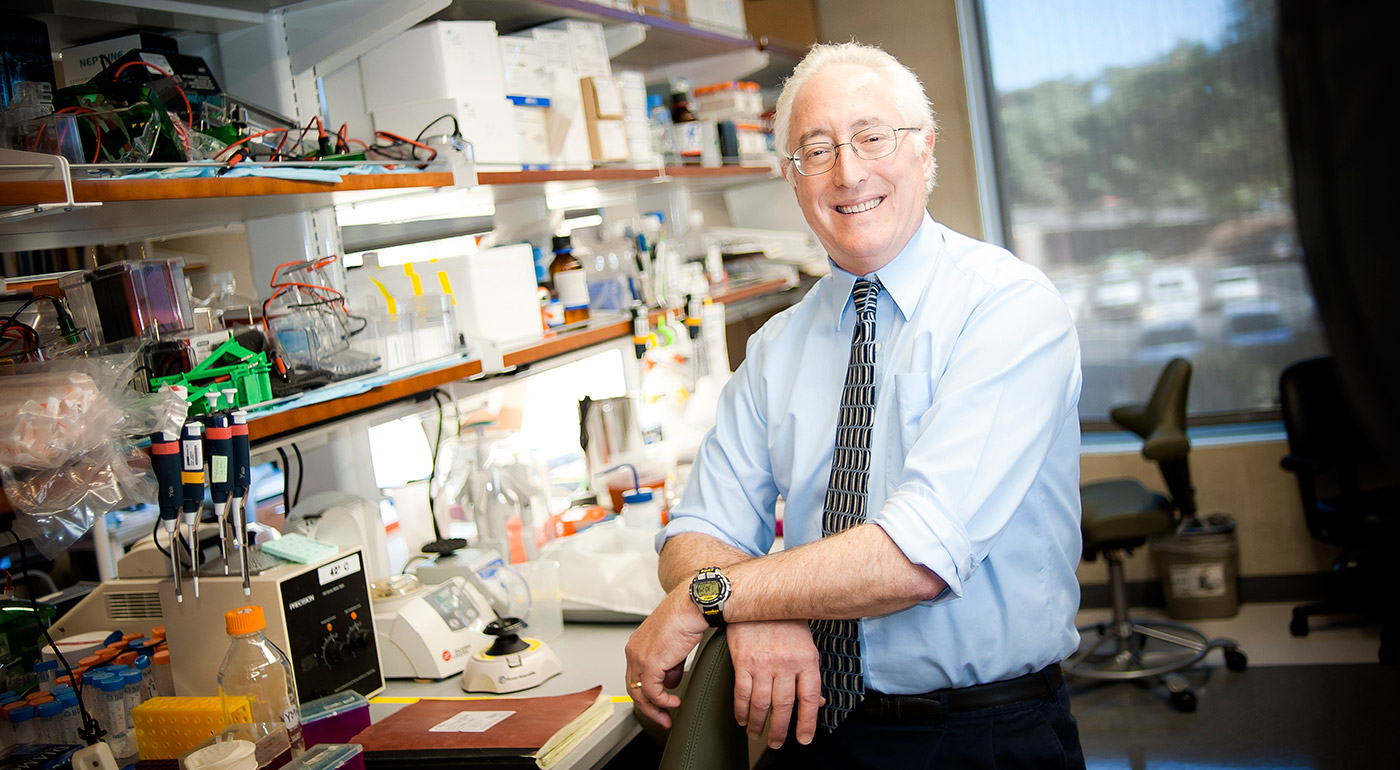
By:
- Scott LaFee
Published Date
By:
- Scott LaFee
Share This:
The Coming of Age of Stem Cell Therapy

Photos by Erik Jepsen/UC San Diego Publications
With first clinical trials, UC San Diego pushes stem cell therapies into a new era of real-world application
In 2004, the therapeutic potential of stem cells persuaded more than 7 million Californians to approve Proposition 71, which allocated a whopping $3 billion for research and development of stem cell-based drugs and therapies that might someday address a medical dictionary’s worth of diseases and conditions.
Now, stem cell research is being put to the test in full force as years of cellular and animal studies make the leap to human clinical trials—a requisite step before any new drug or therapy is approved for market. Nowhere is this progress more visible than at UC San Diego, which in recent weeks has launched the three first stem-cell-based clinical trials in patients to pursue potential treatments for spinal cord injury, Type 1 diabetes and chronic lymphocytic leukemia.
And last week, the California Institute for Regenerative Medicine (CIRM), the state stem cell agency established by Prop.71, named the Sanford Stem Cell Clinical Center at UC San Diego Health System one of three “alpha clinics,” a highly sought-after designation that comes with an $8 million grant to further speed stem cell clinical development. The other two alpha clinic sites are City of Hope hospital near Los Angeles and UCLA.
“A UC San Diego alpha clinic will provide a vital infrastructure for establishing a comprehensive regenerative medicine clinical hub that can support the unusual complexity of first-in-human stem cell-related clinical trials,” said Dr. Catriona Jamieson, deputy director of the Sanford Stem Cell Clinical Center, director of the UC San Diego Moores Cancer Center stem cell program and the alpha clinic grant’s principal investigator.
“The designation is essential in much the same manner that comprehensive cancer center status is an assurance of scientific rigor and clinical quality. It will attract patients, funding agencies and study sponsors to participate in, support and accelerate novel stem cell clinical trials and ancillary studies for a range of arduous diseases.”

Lawrence Goldstein, director of the UC San Diego Stem Cell Program and Sanford Center.
Such work is well underway. Last week, doctors at UC San Diego and Veterans Affairs San Diego Healthcare System, in collaboration with the San Diego-based biotechnology firm ViaCyte, Inc., treated the first patient in an unprecedented Phase I-II trial of a stem-cell-derived therapy for patients with Type 1 diabetes. The trial involves implanting specially encapsulated embryonic stem-cell-derived cells under the skin where it’s hoped they will mature into pancreatic beta and other cells able to produce a continuous supply of needed insulin and other substances.
Last month, a 26-year-old woman paralyzed in a car accident a year ago successfully underwent the first experimental procedure to test whether neural stem cells injected at the site of a spinal cord injury is safe and could be an effective treatment. It is hoped that the procedure – the first of four in the Phase I trial sponsored by the Sanford Center and Maryland-based Neuralstem, Inc. – will ultimately lead to a treatment in which transplanted neural stem cells will develop into new neurons that bridge the gap created by an injury, replace severed or lost nerve connections and restore at least some motor and sensory function.
Also last month, researchers at UC San Diego Moores Cancer Center and the Sanford Center treated the first participant in a novel Phase I trial to assess the safety of a monoclonal antibody treatment that targets cancer stem cells in patients with chronic lymphocytic leukemia, the most common form of blood cancer.
“What we are seeing after years of work is the rubber hitting the road,” said Lawrence Goldstein, director of the UC San Diego Stem Cell Program and Sanford Center. “These are three very ambitious and innovative trials. Each followed a different development path; each addresses a very different disease or condition. It speaks to the maturation of stem cell science that we’ve gotten to the point of testing these very real medical applications in people.”
Goldstein noted that the number of patients involved in these first trials is small. Their focus is upon treatment with low doses to assess safety, but also with hope of patient benefit. As these trials progress – and additional trials are launched – Goldstein predicts greater numbers of patients will be enrolled at UC San Diego, the Sanford Center and elsewhere.
Achieving alpha clinic status should help, he said. One element of the new grant is expanded public outreach to raise awareness and understanding of stem cell science, in part to combat what Goldstein calls “stem cell tourism” and the marketing of unproven, unregulated and potentially dangerous therapies.
“Clinical trials are the fastest and safest way to develop therapies that are truly safe and that actually work. You want to prove that a new therapy will work for more than just a single, random patient. These alpha clinic awards not only provide valuable support that will help accelerate experimental stem cell therapies into clinical trials, they also bring with them a ‘stamp of approval’ that our center meets important standards set by peers for testing of stem cell therapy trials.”
The alpha grant reflects CIRM’s continued support for UC San Diego’s stem cell research and development efforts. Since 2004, CIRM has approved 74 awards totaling more than $147 million to UC San Diego stem cell scientists and programs. The three clinical trials launched are just the first of many to come, said alpha clinic principal investigator Jamieson. Other trials for heart failure, amyotrophic lateral sclerosis (Lou Gehrig’s disease) and blindness are in the planning stages.
Share This:
Stay in the Know
Keep up with all the latest from UC San Diego. Subscribe to the newsletter today.


